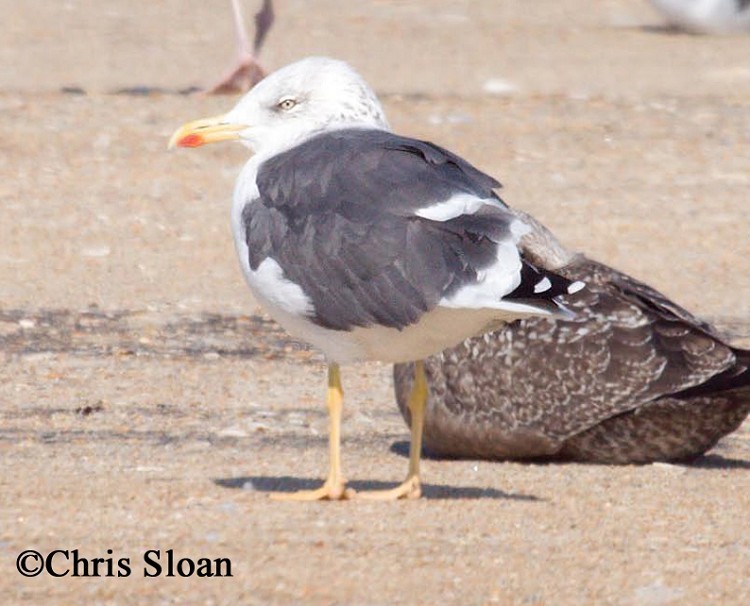Lesser black-backed Gull, Larus fuscus
A familiar and common inhabitant of the European coastline, the Lesser Black-backed Gull is becoming a regular visitor to the eastern United States. Although still relatively uncommon in Tennessee, numbers are increasing throughout the region, and can be found on freshwater lakes and rivers.
Description: The Lesser Black-backed Gull is overall sleek and slender with relatively long, narrow and pointed wings, yellow legs and feet and slender yellow bill with a red spot on the lower mandible .
Head and underparts are white, back is dark gray to black, wingtips are black with some white and rump and tail are white. The eye is a pale yellow with a red orbital ring.
Length: 21 inches
Wingspan: 54 inches
Weight: 1.8 lbs
Similar Species:
- Greater Black-backed Gull - larger in size with a stouter bill and pink legs. Large white spot on the wing, darker back with little to no head streaking.
- Herring Gull - larger, with pink legs, light gray mantle
Habitat: In Tennessee, Lesser Black-backed Gulls can occasionally be found on freshwater lakes and rivers.
Diet: Fish, marine invertebrates, birds, eggs, insects, seaweed, carrion and garbage.
Nesting and reproduction: There are no known records of this species nesting in Tennessee.
Status in Tennessee: The Lesser Black-backed Gull is an uncommon migrant from fall thru Spring, increasing in numbers throughout Tennessee and the Mississippi River area.
